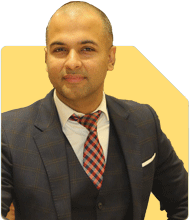Good Day, i am expecting LIC maturity amount about Rs 2000K, foe where i can reinvest please advise
Ans: Congratulations on your LIC maturity amount of Rs. 20 lakhs! This is a significant sum, and your decision to reinvest it wisely can greatly impact your financial future. As a Certified Financial Planner, I understand the importance of making informed decisions to achieve your long-term goals. Let's delve into some suitable investment avenues that align with your financial aspirations.
Understanding Your Goals
Before we proceed, it's essential to understand your financial goals. Do you aim for wealth accumulation, retirement planning, or funding your child's education? Clarifying your goals will guide us in selecting the right investment options.
Diversification for Risk Management
Diversification is a key strategy in investment. It helps in spreading risk across different asset classes. By not putting all your eggs in one basket, you can protect yourself against market volatility. Here are some options you can consider:
Mutual Funds
Mutual funds are an excellent choice for those looking to diversify their investments. They pool money from many investors to invest in stocks, bonds, and other securities. Here are the benefits of mutual funds:
Professional Management: Managed by experienced fund managers.
Diversification: Invest in a variety of securities.
Liquidity: Easy to buy and sell.
Consider investing in a mix of equity and debt mutual funds. Equity funds offer higher returns but come with higher risks, while debt funds provide stable returns with lower risk.
Actively Managed Funds vs. Index Funds
Actively managed funds have the potential to outperform index funds. Here’s why:
Expertise: Managed by professional fund managers who make strategic decisions.
Flexibility: Can adapt to market changes and capitalize on opportunities.
Personalized Strategy: Tailored to meet specific investment goals.
While index funds are passively managed and track a market index, actively managed funds seek to outperform the index. This active approach can potentially yield better returns.
Regular Funds vs. Direct Funds
Investing through a Mutual Fund Distributor (MFD) with CFP credentials has its advantages:
Guidance: Receive expert advice tailored to your financial goals.
Convenience: Hassle-free investment process with professional assistance.
Monitoring: Regular review and adjustments to your portfolio.
Direct funds might seem cost-effective due to lower expense ratios, but the lack of professional guidance can lead to suboptimal investment decisions.
Balanced Investment Approach
A balanced investment approach can offer both growth and stability. Here’s how you can structure it:
Equity Funds
Allocate a portion of your funds to equity mutual funds. These funds invest in stocks and have the potential for high returns. Consider large-cap, mid-cap, and small-cap funds for a well-rounded portfolio.
Large-Cap Funds: Invest in well-established companies with a track record of stable performance.
Mid-Cap Funds: Invest in medium-sized companies with growth potential.
Small-Cap Funds: Invest in smaller companies with higher growth prospects but also higher risk.
Debt Funds
Debt funds invest in fixed-income securities like bonds and treasury bills. They provide regular income and are less volatile compared to equity funds. Here are some types of debt funds:
Short-Term Debt Funds: Suitable for a horizon of 1-3 years, offering higher returns than savings accounts.
Corporate Bond Funds: Invest in high-rated corporate bonds, providing better returns with moderate risk.
Liquid Funds: Ideal for short-term investments with high liquidity and low risk.
Gold and Sovereign Gold Bonds (SGB)
Investing in gold can be a good hedge against inflation and market volatility. Sovereign Gold Bonds (SGB) offer an additional interest component along with the appreciation in gold prices. Here are the benefits:
Safety: Backed by the Government of India.
Interest: Earn interest on your investment in addition to capital gains.
Tax Benefits: Exempt from capital gains tax if held till maturity.
National Pension System (NPS)
The National Pension System (NPS) is a government-sponsored retirement savings scheme. It provides market-linked returns and tax benefits. Here's why you might consider NPS:
Retirement Planning: Helps build a substantial retirement corpus.
Tax Benefits: Deduction under Section 80C and an additional deduction under Section 80CCD(1B).
Flexibility: Choose your asset allocation between equity, corporate bonds, and government securities.
Fixed Deposits (FDs)
Fixed deposits are a safe investment option that provides guaranteed returns. Here are their advantages:
Safety: Principal amount is secure.
Fixed Returns: Earn a fixed interest rate over the tenure.
Flexibility: Choose tenures ranging from 7 days to 10 years.
However, FDs typically offer lower returns compared to other investment options. They are best suited for conservative investors seeking capital protection.
Public Provident Fund (PPF)
PPF is a long-term savings scheme backed by the government. It offers attractive interest rates and tax benefits. Here's why PPF is a good option:
Tax Benefits: Investment, interest earned, and maturity amount are tax-exempt.
Safety: Backed by the government.
Long-Term Growth: Ideal for long-term financial goals like retirement.
Systematic Investment Plan (SIP)
A Systematic Investment Plan (SIP) allows you to invest a fixed amount regularly in mutual funds. It offers the benefit of rupee cost averaging and disciplined investing. Here's how SIPs can help:
Rupee Cost Averaging: Buy more units when prices are low and fewer when prices are high.
Disciplined Investing: Encourages regular savings and long-term wealth creation.
Flexibility: Start with a small amount and gradually increase your investment.
Creating an Emergency Fund
An emergency fund is essential for financial security. It provides a safety net during unexpected situations. Here’s how to build one:
Target Amount: Aim to save 3-6 months' worth of living expenses.
Liquidity: Keep the fund in a liquid asset like a savings account or liquid mutual fund.
Regular Contributions: Set aside a portion of your income each month.
Insurance Coverage
Adequate insurance coverage is crucial to protect against unforeseen events. Here’s what you need:
Term Insurance
Term insurance provides financial security to your family in case of your untimely demise. Here are the benefits:
Affordable Premiums: Lower premiums compared to other insurance types.
High Coverage: Provides substantial coverage amount.
Simplicity: Easy to understand and straightforward policy.
Health Insurance
Health insurance covers medical expenses and ensures access to quality healthcare. Here’s why it’s important:
Medical Expenses: Covers hospitalization, surgeries, and other medical costs.
Peace of Mind: Protects against financial burden during medical emergencies.
Additional Benefits: Some policies offer preventive health check-ups and wellness programs.
Regular Review and Monitoring
Investing is not a one-time activity. Regular review and monitoring of your investments are essential to stay on track. Here’s what you should do:
Periodic Review: Assess your portfolio’s performance periodically.
Rebalance: Adjust asset allocation based on market conditions and your goals.
Stay Informed: Keep up with market trends and economic developments.
Seeking Professional Guidance
Investing can be complex, and professional guidance can make a significant difference. Consulting a Certified Financial Planner (CFP) ensures that you receive expert advice tailored to your financial needs. Here are the benefits:
Personalized Advice: Investment strategies aligned with your goals and risk tolerance.
Comprehensive Planning: Holistic approach covering all aspects of financial planning.
Peace of Mind: Confidence in your financial decisions with professional support.
Avoiding Common Pitfalls
Investing comes with its set of challenges. Here are some common pitfalls to avoid:
Chasing Returns: Avoid investing based solely on past performance.
Lack of Diversification: Don’t put all your money in one asset class.
Ignoring Inflation: Ensure your investments outpace inflation for real growth.
Final Insights
Investing your LIC maturity amount wisely can set you on the path to financial freedom. By diversifying your investments, balancing risk and returns, and seeking professional guidance, you can achieve your financial goals. Remember, the key to successful investing is discipline, patience, and continuous learning.
Best Regards,
K. Ramalingam, MBA, CFP
Chief Financial Planner
www.holisticinvestment.in



























.jpg)

